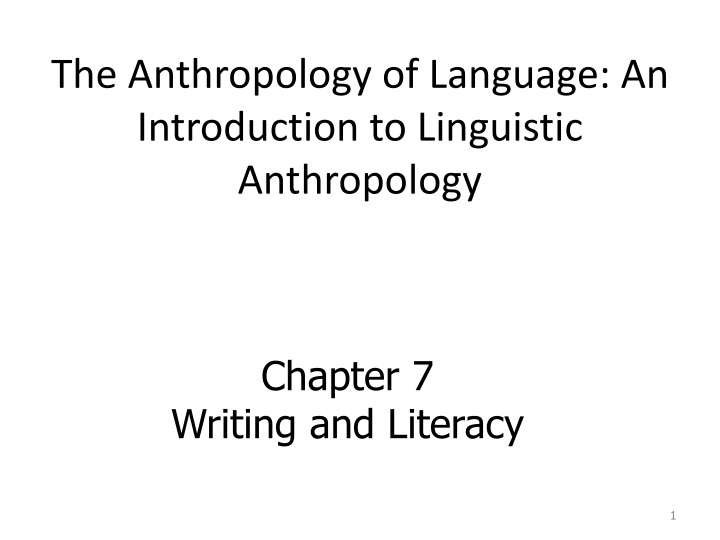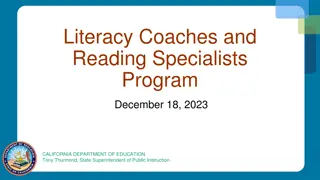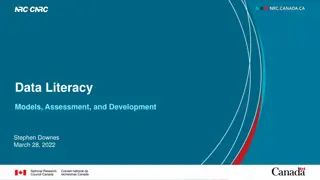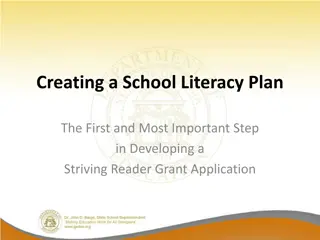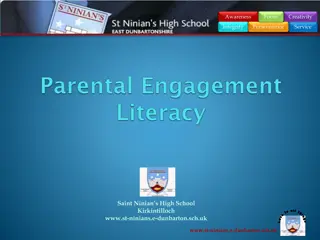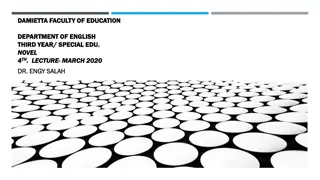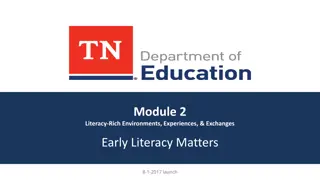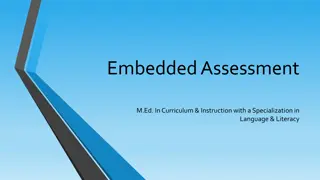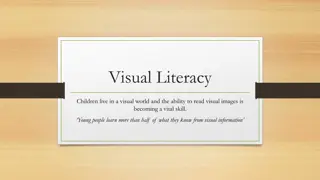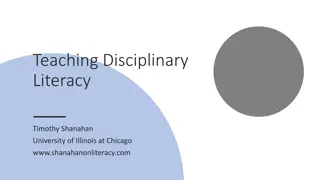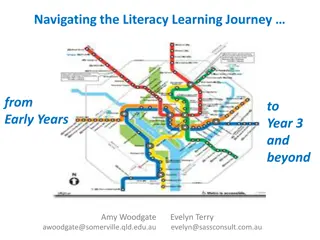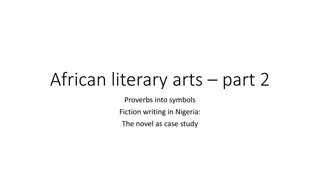Writing and Literacy: Exploring Symbols and Systems
Graphic representation of language through writing, decoding texts, and understanding symbolism in various writing systems. Explore the evolution and classification of writing. Discover how writing works and the significance of literacy in different cultures.
Download Presentation

Please find below an Image/Link to download the presentation.
The content on the website is provided AS IS for your information and personal use only. It may not be sold, licensed, or shared on other websites without obtaining consent from the author.If you encounter any issues during the download, it is possible that the publisher has removed the file from their server.
You are allowed to download the files provided on this website for personal or commercial use, subject to the condition that they are used lawfully. All files are the property of their respective owners.
The content on the website is provided AS IS for your information and personal use only. It may not be sold, licensed, or shared on other websites without obtaining consent from the author.
E N D
Presentation Transcript
The Anthropology of Language: An Introduction to Linguistic Anthropology Chapter 7 Writing and Literacy 1
Most of us are pretty good at interacting with writing, but we seldom define our terms. Writing: Graphic representation of language Recording language by visible marks Symbols that convey thought System of storage and retrieval Literacy The skill of ciphering and deciphering texts 2
How Does Writing Work? Using marks to represent sounds, ideas/meanings Phonetic sign: mark that represents one or more sounds English sign <s> = the sound [s] Arabic sign < > = the sound [s] But <s> can also = [z] And <x> = [ks] Semantic sign: mark that represents specific idea/meaning <2> in English, French, German, Swahili, etc. Combining phonetic and semantic signs: <2nd> (English) <2e > (French) 3
Classic classifications Based on predominance of sign types Semantic vs. phonetic signs Ideographic/logographic vs. syllabic/alphabetic systems Assumed progression from semantic to phonetic This assumption does not hold up in the face of the existing data 4
Contemporary classifications Recognize that all systems use combinations Pictographic Rebus Logographic Syllabic Logosyllabic Alphabetic 5
Even Pictographs must be deciphered Pictures/images represent things Meanings can be extended Drawing of a sun can equal warmth But extensions require cultural context: Is this a picture of a woman in a skirt, or a man in a kanzu, a Swahili robe? 6
Writing Systems Writing and symbolism Universal symbols? Arbitrary symbols? What is writing? How does writing work? Kinds of systems Analyzing writing systems Developing/having writing Literacy and representation The ethnography of writing 7
What is Writing? Graphic representation of language Recording language by visible marks Symbols that convey thought System of storage and retrieval Generally considered secondary to speech Complete vs. partial writing systems Complete: any and all thoughts and words Partial: limited in what they can convey 8
How Does Writing Work? Using marks to represent sounds, ideas/meanings Phonetic sign: mark that represents one or more sounds vs. phonetic symbol: linguistic transcription of a single sound <s> vs. < > vs. < > vs. < > vs. < > = [s] <ch> in English vs. French vs. German Semantic sign: mark that represents specific idea/meaning <2> in English, French, German, KiSwahili, etc. <2> vs. < > vs. <..> Combining phonetic and semantic signs: <2nd> (English) <2e > (French) 9
Kinds of Writing Systems Old-fashioned classifications Were based on predominance of sign types Semantic vs. phonetic signs Ideographic/logographic vs. syllabic/alphabetic systems Assumed progression from semantic to phonetic Are now understood to be ethnocentric Contemporary classifications Recognize that all systems use combinations Pictographic Rebus Logographic Syllabic Logosyllabic Alphabetic 10
Pictographic Writing Pictures/images represent things drawing of a sun = the sun Pictographs alone are not complete writing systems Meanings can be extended Drawing of a sun can = warmth Extensions require cultural context: 11
Rebus Writing Picture represents words that sound the same: Drawing of the sun represents (in English): Sun and Son Drawing of a star represents (in Sumerian): [an] = Star, Heaven, Sky-God A major breakthrough in writing Allows for sentences like Eye sea ewe, Eye c u, Got 2 go Independently discovered in: Sumeria 3,000 BCE China 1,500 BCE Mayan America 0 BCE 12
Logographic Writing Signs stand for words (or ideas) Also called Ideographic One sign = one word sign for sun = the spoken word sun [s n] @ sign = at (in English), herring (in Czech) May have evolved from pictographs Becoming more abstract over time Chinese sign for [ma] horse; Sumerian sign for [an] star 13
Syllabic Writing Signs stand for syllables A sign for sun = the syllable sun [s n] sunken, sunder, sundry, sunshine. Cherokee 14
Logosyllabic Writing Signs carry both semantic and phonetic information Useful when words are written alike Determinatives help to clarify: Semantic determinatives help to clarify meaning Chinese [yang] = sheep & ocean Semantic determinative for water produces ocean Phonetic determinatives help to clarify pronunciation English <2> = two second Phonetic determinative <nd> produces second 15
Alphabetic Writing Signs stand for individual sounds e. g., consonants & vowels English sign <s> = the sound [s] Arabic sign < > = the sound [s] Arabic sign < > = the sound [a] Goal not always achieved: English sign <x> = [ks] 16
Beginnings of Alphabetic Writing 17th century BCE Akkadians/Phoenecians adapt Sumerian system From CVCV syllabary to tri-consonantal roots Signs used for consonants (and vowels) Aleph-bet / Alif-bet 9th century BCE Greeks adapt Phoenecian system More vowels, fewer consonants Reassigning some C signs to Vs Alpha-bet 17
Khipus A special case Tying knots into cords Calendrical Economic Historical data May be a full-blown writing system 18
Analyzing Writing Systems Determine the principles/strategies Syllabic, alphabetic, etc. Identify units Graphemes Smallest segment of speech represented in system Sounds, syllables, whole words Allographs: predictable variants of graphemes English print and cursive styles; initial and final shapes Lexemes/Frames Units of writing surrounded by white space Look for minimal pairs, similarity of shapes e.g., the Japanese exercise in the Workbook 19
What Does it Mean to Have Writing? Association with civilization Does an introduced writing system count? The Lahu example Developing new writing systems How are words put together? CV, CCC, etc Issues of identity Spelling in the Comoros French? Arabic? African? Phonemic? Promoting literacy So what is there to read? 20
Writing, Reading, Identity, Power Learning to read and write Defining literacy Using what writing system? Defining correctness Night vs. nite Writing and representation 21
Writing and Representation Entextualizing speech Getting words onto paper Questions of representation Rapid speech Dialectical speech couahfee; warsh, crick gonna - goin - gon - gwine Power and politics in representation Writing Cousin Joe 22
Writing and Literacy Defining literacy Promoting literacy So what is there to read, and who has time to read it? Literacy associated with particular projects Literacy associated with particular skills or types of cognition Understanding the impacts of literacy 23
Literacy and Literacies What does it mean to be literate? kinds of literacy: print, map, computer Defining literacy Literacy as technology Autonomous approach Literacy as practice Practice approach to literacy New Literacy Studies Ethnographic approach Taking context and experience into account 24
The Consequences of Literacy Literacy and Orality Abstract, generalizing, context-free, objective Concrete, particularizing, situational, subjective Bantu abstractness (ubuntu) Vai triliteracy Chinese and Indian literacies Literacy and linguistic awareness Writing changes the way we think about language (Coulmas) 25
Literacy and Permanence Written records vs. oral traditions Finding archaeological sites in the Comoros Following clues from oral tradition 26
Literacy in Cross-Cultural Perspective The ethnography of reading/writing Heath s practice approach to literacy events How does reading/writing function in a culture? What kinds of things are read/written? Letters, cards, lecture notes, PowerPoint slides Reading/writing styles (and linguistic capital) Trackton, Roadville, Maintown Ideas about reading/writing When is handwriting preferred to typing? And vice versa Condolence letters, form letters, job applications 27
Literacy and Power Issues of access Who should read/write? Issues of colonialism Destroying Mayan writings Introducing book authority in New Guinea Issues of standardization Dialects and politics Issues of reform Changing spellings Americanizing English Reforming scripts Nationalism and orthography in Ukraine Scriptal change in Turkey 28
Ways of Reading/Writing Linear vs. multimodal reading/writing The Machine Is Us/ing Us Public vs. private reading/writing Blogging Challenges to standardization L337 Teh kitteh 29
Creating a Language Optional: Create an orthography for your language 30
Next: How and When is Language Possible? Read: Textbook Chapter 8 Workbook/Reader: Ottenheimer & Ottenheimer (pp. 157-161) Prepare to do: Writing/Discussion Exercises (W/R pp. 163-166) Language Creating (W/R p. 171) Conversation partnering (W/R p. 172) 31
